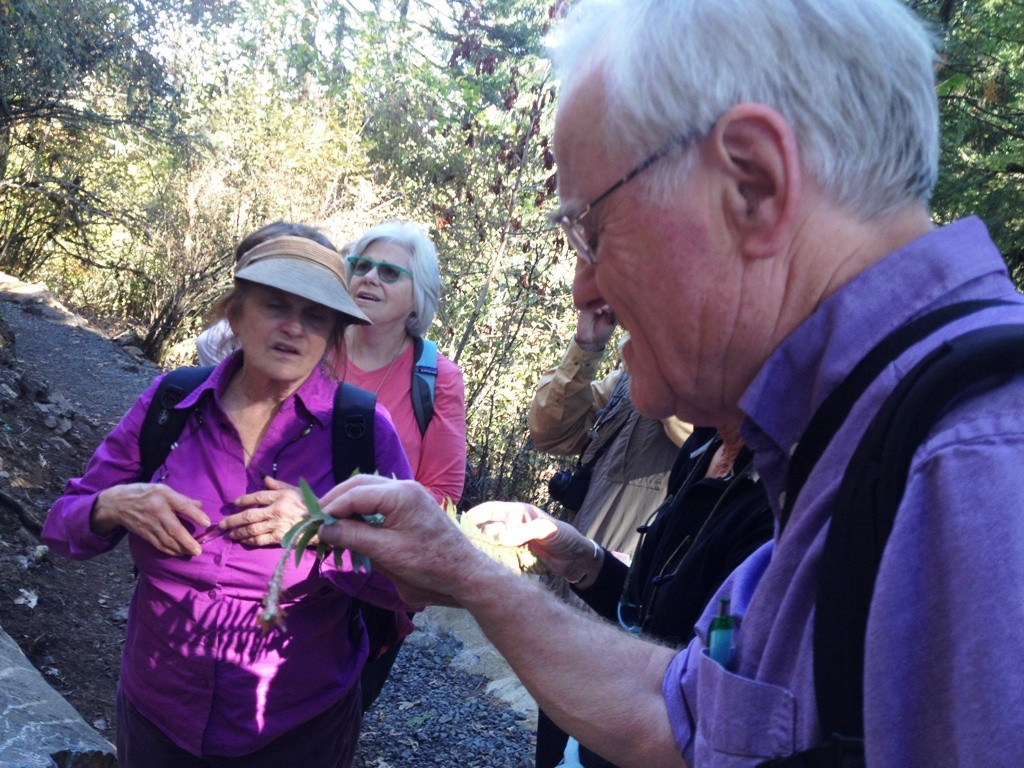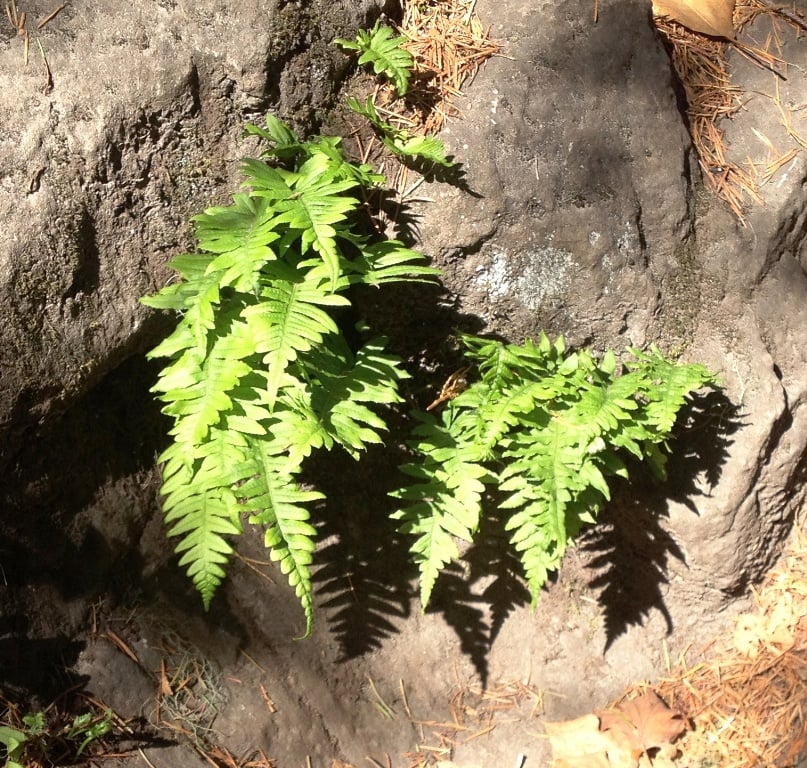Recently, I was invited to hike in the Oregon woods with a group of fern enthusiasts—several from the UK. The group was on a three-week botanizing road trip throughout the Northwest. When I caught up with them, they were picnicking trailside in a park near my house and talking Latin. Every other word was a fern name and since some ferns possess three, four, or even five, that’s a lot of Latin.
Although we were walking a trail I knew well, the botanizers revealed a whole new world of overlooked complexity. They examined fern fractal forms, using a hand lens to discern the tiniest clues—is that fuzzy part at the base of the stipe brown or white?
I thought about why we invite ferns into the garden or greenhouse. With their myriad shapes, they’re delightfully diverse. Andferns grown among other plants perform the same design magic they do in a mixed bouquet—they tie together all the various elements. As one hiker said, “No other plant brings that kind of grace.”
 Martin Rickard, past president of the British Pteridological Society, was among the travelers. His book, The Plantfinder’s Guide to Garden Ferns, was my go-to source when I wrote the ferns’ section of the Sunset Western Garden Book. Martin has written five fern books, owned a fern nursery in England, and garnered a slew of Chelsea gold medals and other awards. The group came to my house for dinner, so I asked Martin about his favorite ferns. Here are five of his choices.
Martin Rickard, past president of the British Pteridological Society, was among the travelers. His book, The Plantfinder’s Guide to Garden Ferns, was my go-to source when I wrote the ferns’ section of the Sunset Western Garden Book. Martin has written five fern books, owned a fern nursery in England, and garnered a slew of Chelsea gold medals and other awards. The group came to my house for dinner, so I asked Martin about his favorite ferns. Here are five of his choices.
Adiantum venustum – Martin declares this fern “A winner—with all the delicacy of a maidenhair, but perfectly hardy.” (Zone 4b-8a)
Asplenium trichomanes ‘Cristatum’ – At 8 by 12 inches, “This is a beautiful little fern for a rock garden or trough,” Martin suggests. (Zone 5 and up)
Dryopteris affinis ‘Crispa Gracilis’ – Here’s another small (12-inch) but tough fern for the front of the border. Its densely packed fronds are described as “congested”—but in ferns that’s a good thing. (Zone 4-8)
Asplenium scolopendulum ‘Crispum’ – “An absolute beauty,” Martin says. He explains the 24-inch fronds are “goffered— like an Elizabethan ruff.” While hardy, this dramatic frilled fern is great for close-up viewing in a cool greenhouse or enclosed porch. (Zone 5a-9b)
like an Elizabethan ruff.” While hardy, this dramatic frilled fern is great for close-up viewing in a cool greenhouse or enclosed porch. (Zone 5a-9b)
Polypodium glycyrrhiza – This 18 to 24-inch licorice fern is one of Martin’s favorites—“Gorgeous winter-green native,” he says. We had seen it on the trail, unnoticed except by the botanists, tucked into the edge of basalt rocks, still green after a severe summer of drought. (Zone 6-8)


